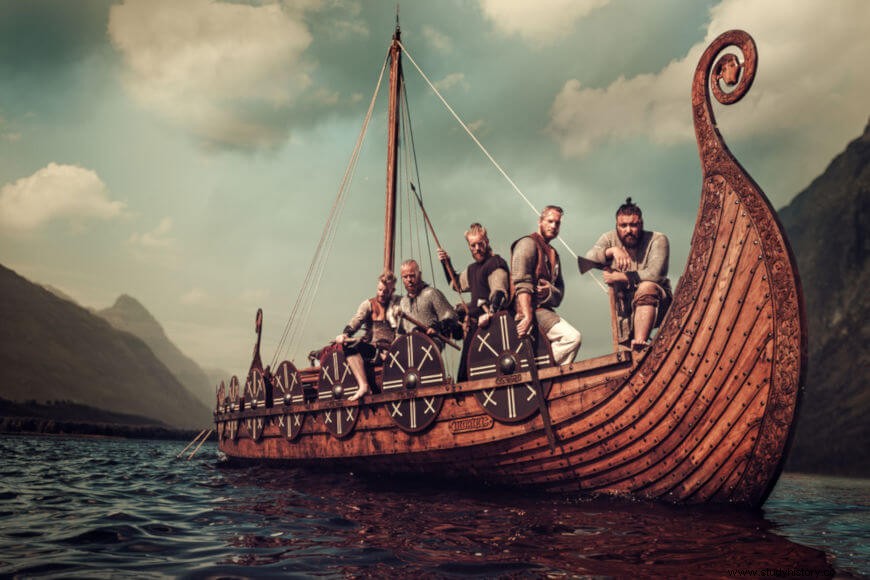
By Rainer Sousa
During the Late Middle Ages, the Viking civilization began a series of invasions that would mark the unstable European military political framework. Belonging to a civilization with a strong militaristic tradition, the Vikings believed that conflicts occupied an important space in their beliefs and social practices. In this way, between the 8th and 11th centuries, a large number of battles took place that took over much of the Old World.
Vikings hail from the icy lands found in the regions of Norway, Denmark and Sweden. In these regions - despite the lack of abundant resources - they practiced agriculture, fishing and trade in various products such as wheat, fish, metals, wood and some slaves. Historically, they were able to form an autonomous culture, given that the Romans did not promote the occupation of Scandinavian domains.
Even sharing different habits and customs, the Vikings did not experience any type of centralized government capable of organizing the invasions of Europe. Usually, small independent groups organized the looting that began to reach the European world from the British Isles. They made use of the drakkar, a type of light vessel, with which the Vikings reached Europe by sea and rain. Not by chance, they began the occupation of Continental Europe by entering the River Seine.
Although the invasions reached these first two locations, the Viking occupation took place simultaneously in several parts of Europe. One of the most visited targets was Ireland, which due to the proximity and the help of the winds made this military onslaught occur without major difficulties. While the Norwegian and Danish Vikings invaded regions of Spain and France, the Swedes used to invade parts of Poland, Latvia, Lithuania and Russia.
Contrary to popular belief, we cannot define that the invasion carried out by the vikings occurred out of a mere inclination towards war. According to some researches, the process of territorial expansion of this civilization was gradual and, probably, it was motivated by the problem of the increase of the population contingents in less fertile lands. Contrary to several myths linked to this civilization, the Vikings were not xenophobic and carried out trade with various foreign peoples.
Another interesting “invented tradition” linked to Viking peoples is related to the habit of wearing horned helmets. Archaeological research indicates that a small part of the combatants used this type of apparatus, more commonly used for carrying out religious rituals. This association between the Vikings and the horns happened with the popularization, during the 19th century, of plays and operas that incorporated this showy ornament.
In this expansion process, also responsible for the colonization of several Nordic lands, the Vikings would end up anticipating the voyage made by Christopher Columbus by five centuries. Around the year 1000, according to traces found on the east coast of Canada, a group of Vikings dominated some lands in this investigated region. However, the difficulties of settling and the confrontation with the native peoples ended up putting an end to this enterprise.
At the same time, around the 11th century, the expansion of Viking peoples across Europe began to show its first signs of wear and tear. In addition to suffering from several military defeats, the advance of Christianity across the continent ended up weakening the formation of new troops willing to fight. Despite so many transformations, the traditions and legends created by this civilization are still present in several traits of contemporary European culture.
Take the opportunity to check out our video lesson related to the subject:
